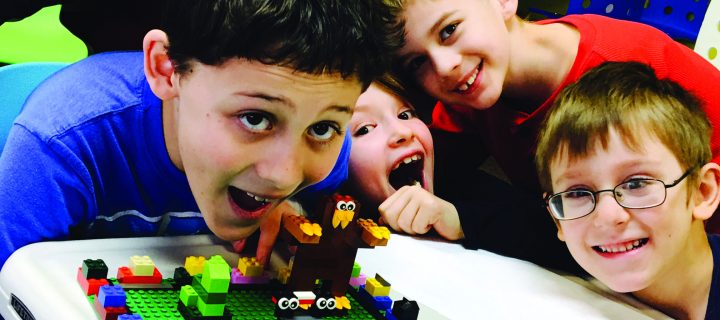By: Kelsey Dimmick
In this technological age of staying tuned in, logged on, plugged in, and keeping up with viral videos and social media, it can all seem a little overwhelming at times. For those of you who think you are absolutely clueless about electronics, let me explain what computer coding is all about.
Programming is the process of typing code, or computer instructions, to create a program. Whenever we use a computer, we use programs that were created by coding. Anything as big as an operating system ( like Windows or MacOS), to something as small and silly as an app that throws birds at pigs, was once coded. It seems simple enough; however, programming is more than just typing on computers.
“So why should my child learn coding?” Well, I’ll explain why…
The reason it is so important to learn coding at a young age is that it hones important skills that are useful for your children beyond the technological realm. Coding requires a great deal of problem solving and critical thinking. By learning programming, children gain a new mindset and a new perspective on how to analyze and overcome complex situations. Learning these skills early on creates mental maps that can make future, more complex concepts easier to understand and master.
Coding also encapsulates the STEAM learning ideal to help expand a child’s breadth of learning. For those of you who are not familiar with STEAM, it is the idea that Science, Technology, Engineering, Art, and Math should all be incorporated together to teach children to establish a well-rounded foundation.
The following concepts show how coding encompasses every component of STEAM:
Science: The process of creating a program requires the use of the scientific method. A hypothesis needs to be drawn, trials and errors recorded, steps to completion drafted, as well as a conclusion reached about whether you were successful, or not, and why -and what can be done to fix any problems. Coding aids in critical thinking and defines a scientific way that problems can be approached and solved.
Technology: Coding requires the use and understanding of technology in order to be implemented. Since coding is based around technology, it clearly fits into this category.
Engineering: Programming offers a way to logically construct designs based on mathematic and critical thinking techniques. By using code to create simulations, engineers can determine the optimal way to complete projects and identify and solve problems before they are built.
Art: Think about the latest Pixar or animated film you have seen. Those characters were created through coding. Artistic renderings are turned into computer generated avatars that can then be manipulated through code to bring them to life on the big screen.
Math: To create code, numbers have to be compared, assigned variables, used for coordinates, etc. By using numerical values in coding, we can apply math in a visibly useful way, eliminating that question of “when am I going to use this in real life?” that kids struggle with.
There may be those of you reading, who are still saying to yourself, “I don’t know, I still don’t like the idea of having a computer teach my child.” Hopefully, I can put your mind at ease because learning the fundamentals of coding does not have to involve a computer.
At Bricks 4 Kidz’s Coding classes, their curriculum with both on-line and off-line activities, develop STEAM skills on and off the computer. They see computers as one more learning tool rather than the only way to teach the principles of coding. By having a healthy pairing of hands-on activities with a few coding lessons on the computer to emphasize topics, kids are able to absorb the material easier and have more fun. Cross platform instruction is a common Bricks 4 Kidz’s methodology throughout most of their classes. They do not just have kids sit and build with Lego bricks all day. They have them learn what they are building, understand topics, and be able to improve upon them by asking questions to further their knowledge. By using subjects that kids get excited about like: Minecraft, Pokemon, Harry Potter, Super Hero’s, Star Wars, etc., they are able to create an environment where kids are eager to learn.
By utilizing such teaching methods, and incorporating STEAM concepts, as well as critical thinking techniques, a well-rounded education is gained. Coding emphasizes these important common core traits. We can think of coding as an extra tool in our teaching arsenal to create new ways of understanding key topics. Through coding, we are able to develop new skills and re-purpose old ones, in a growing age for our growing generation of kids.






